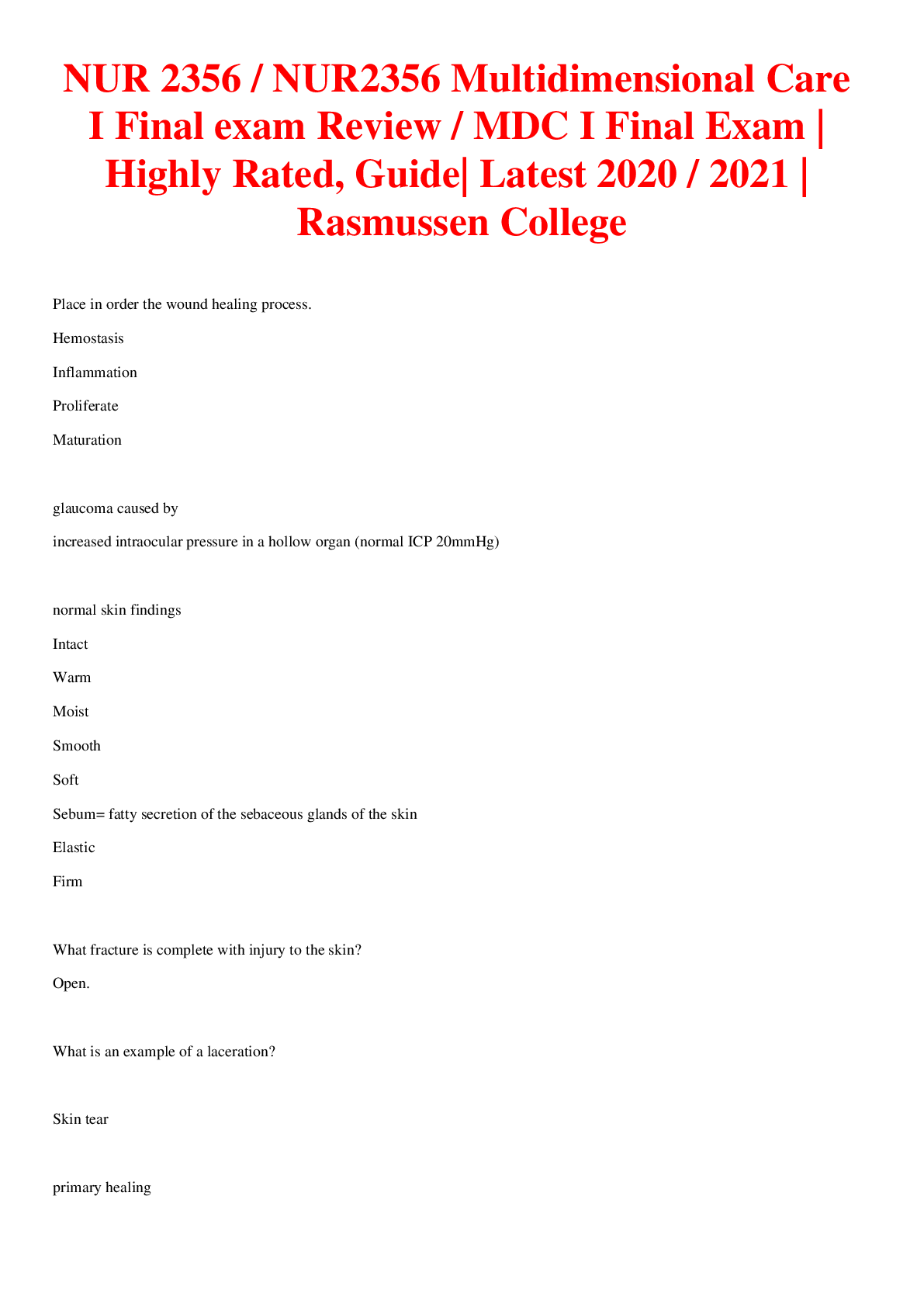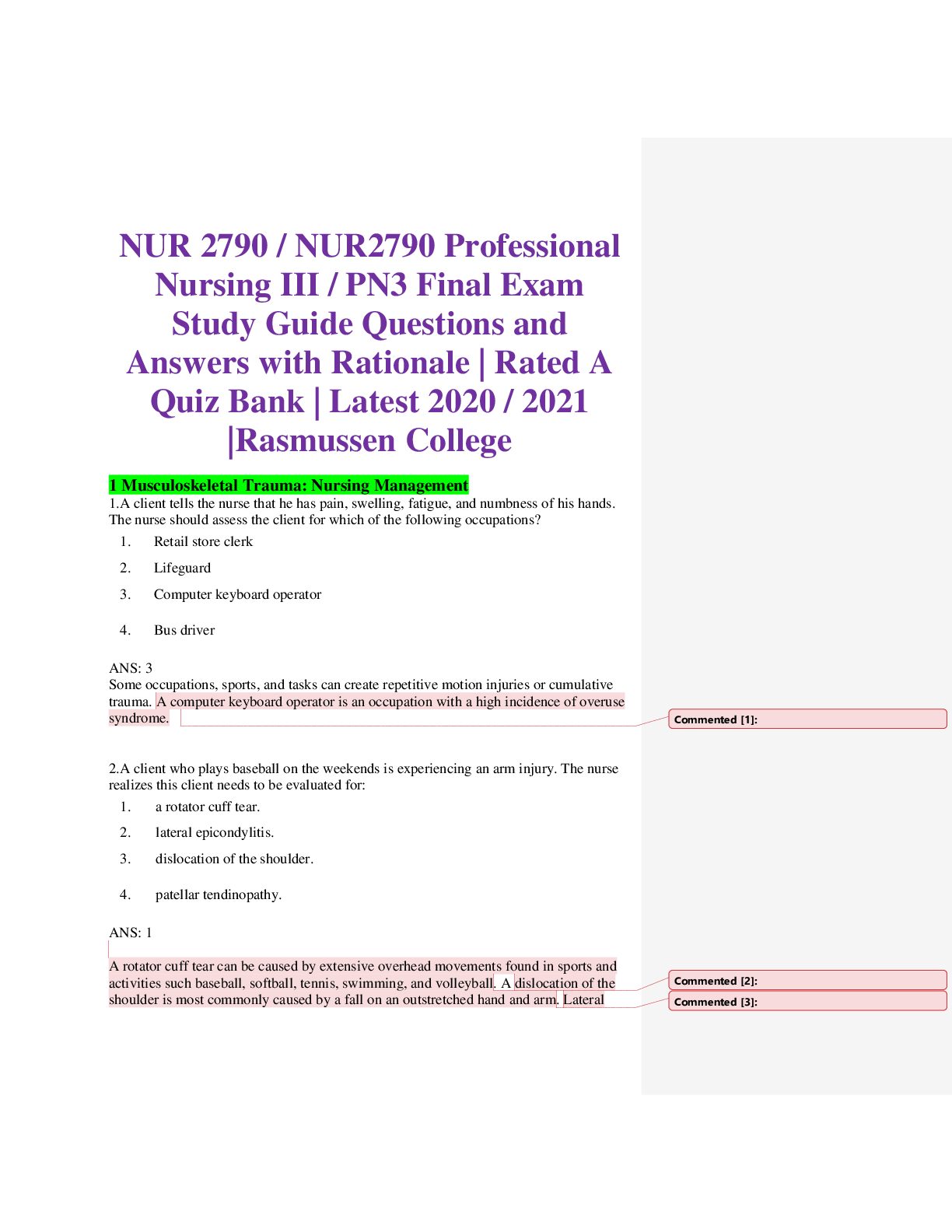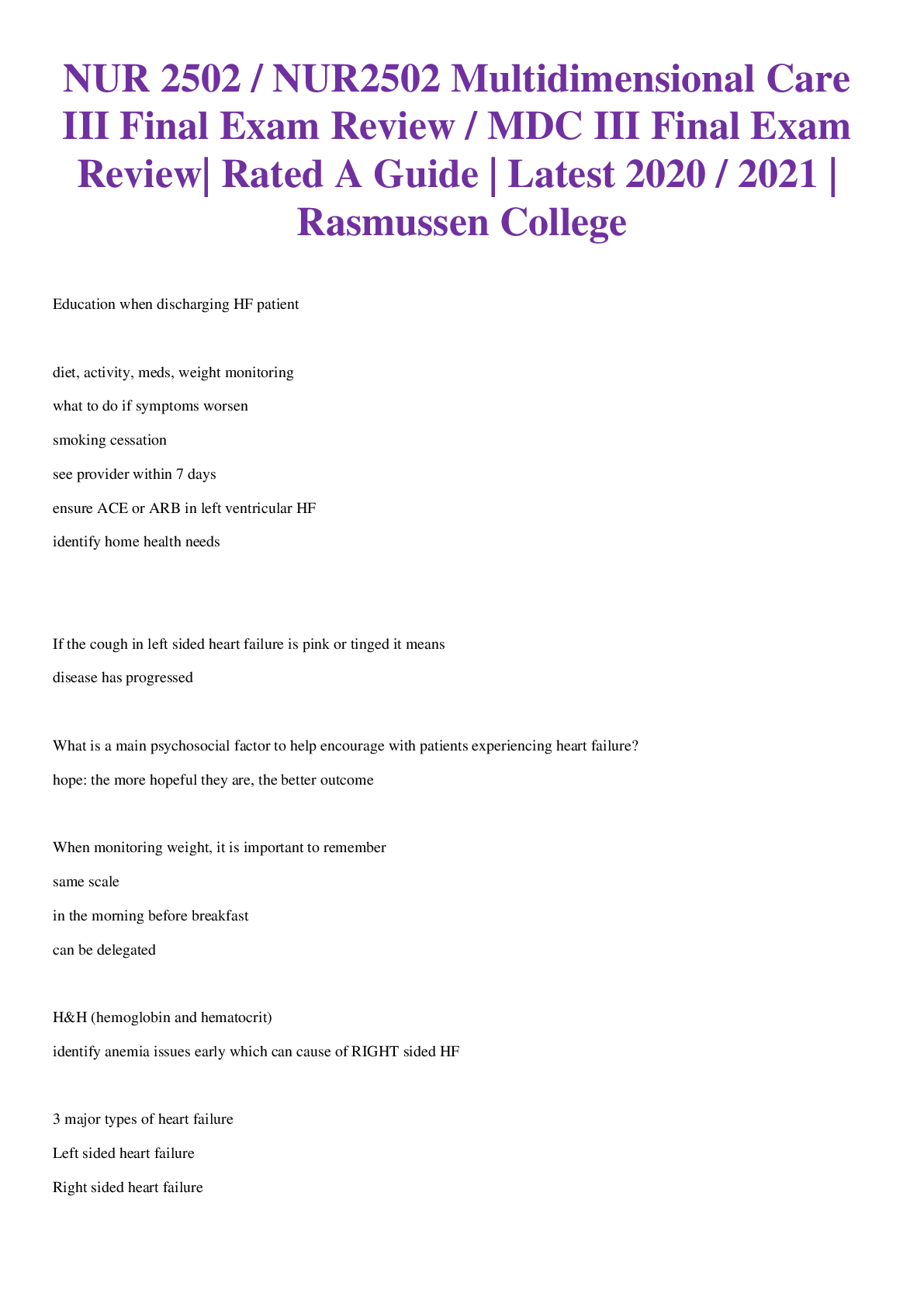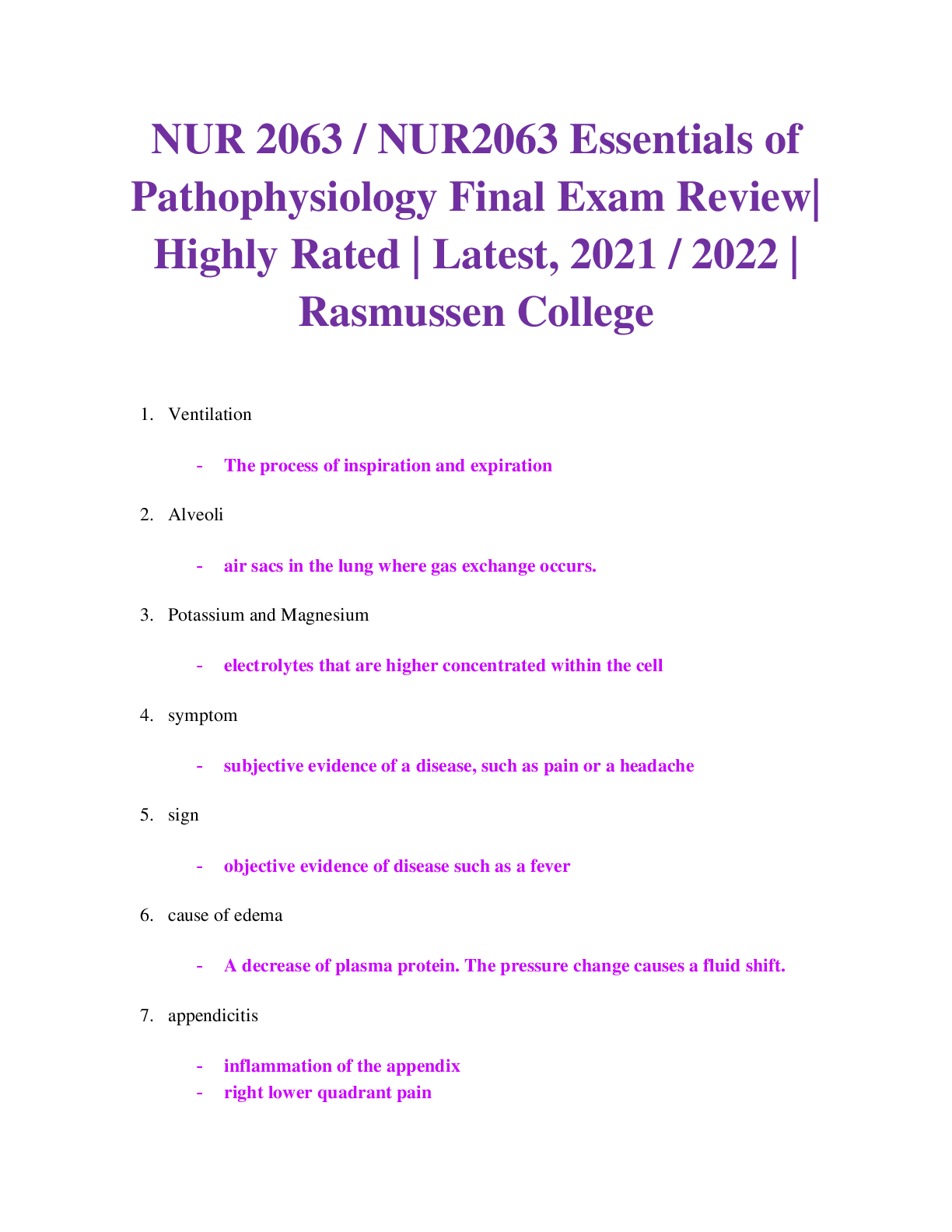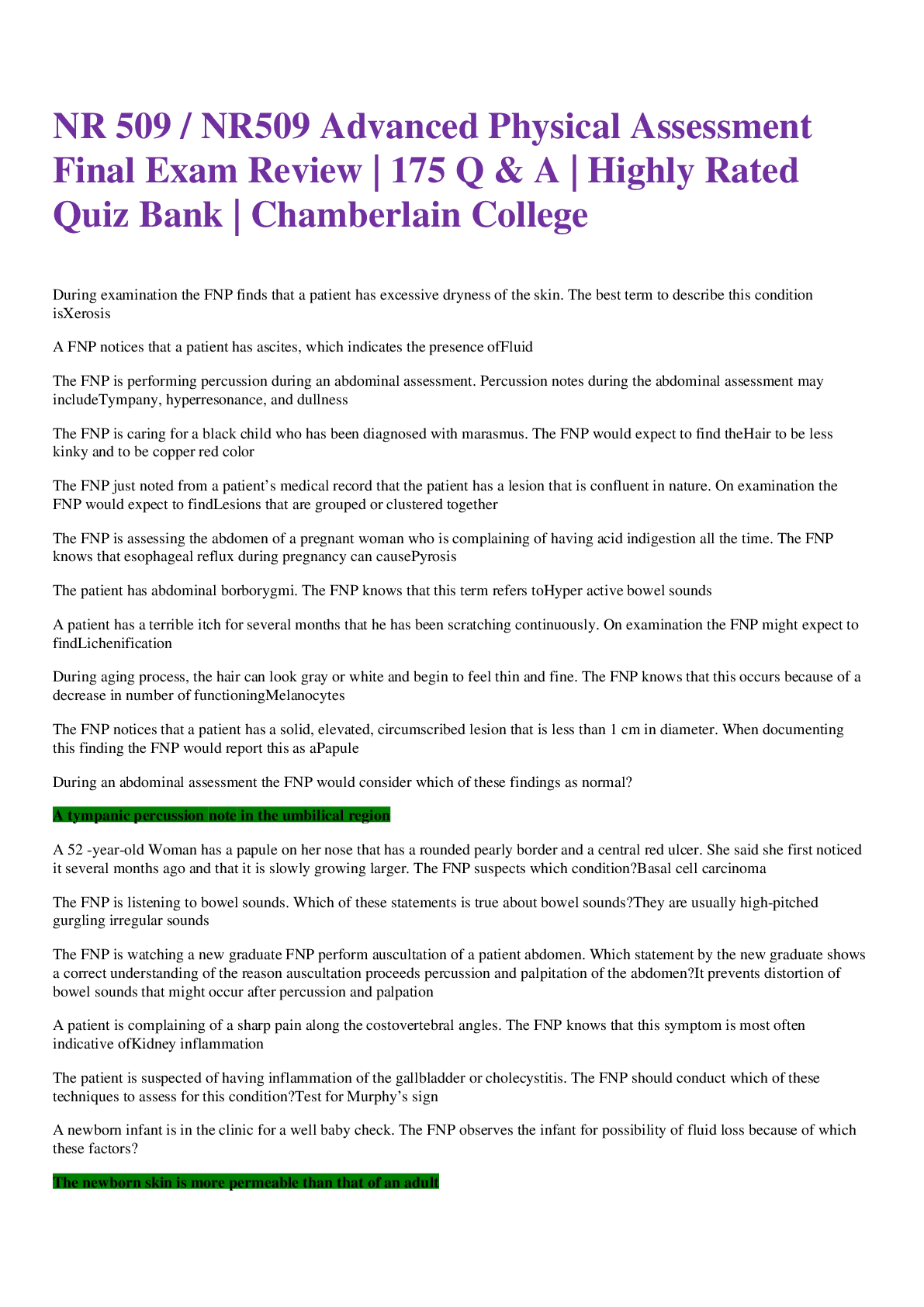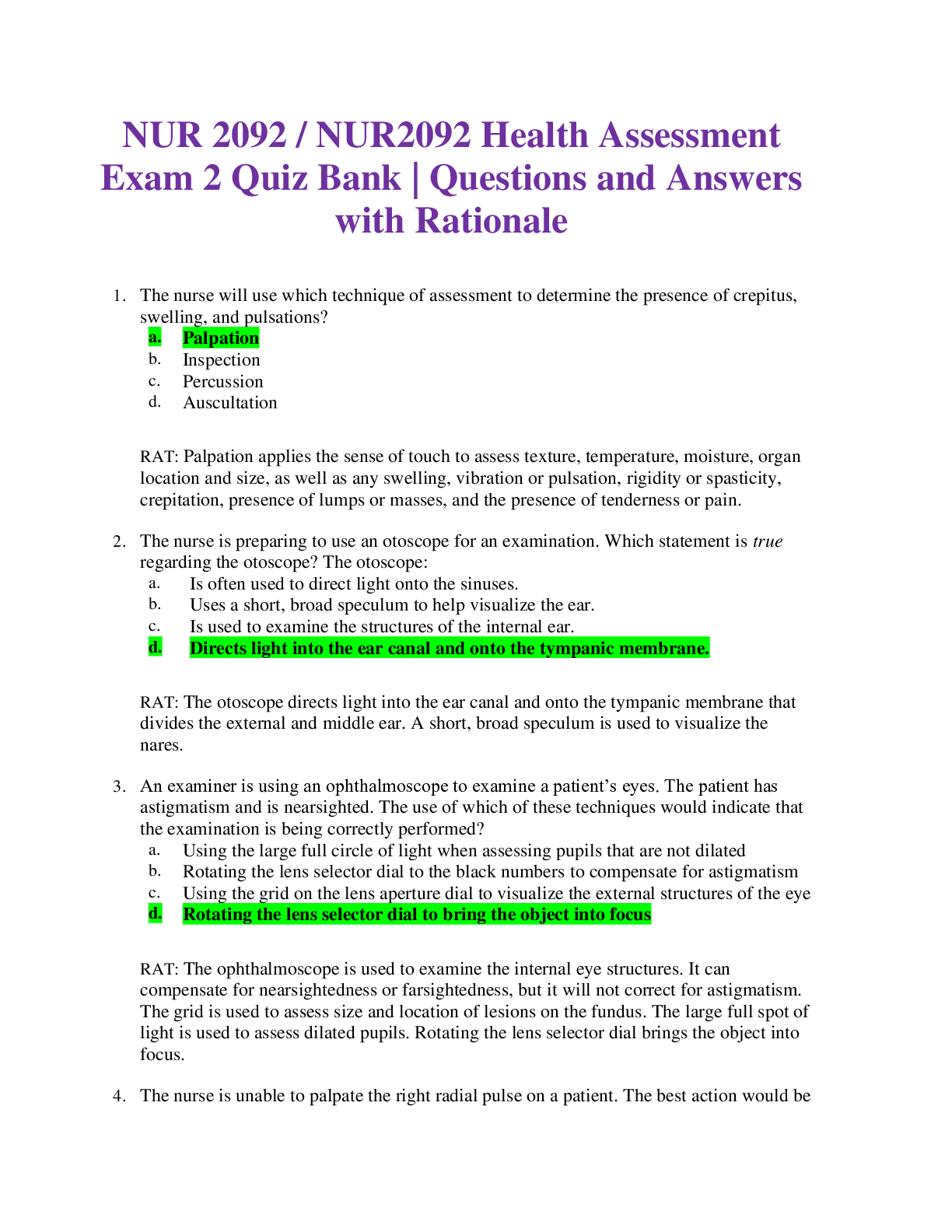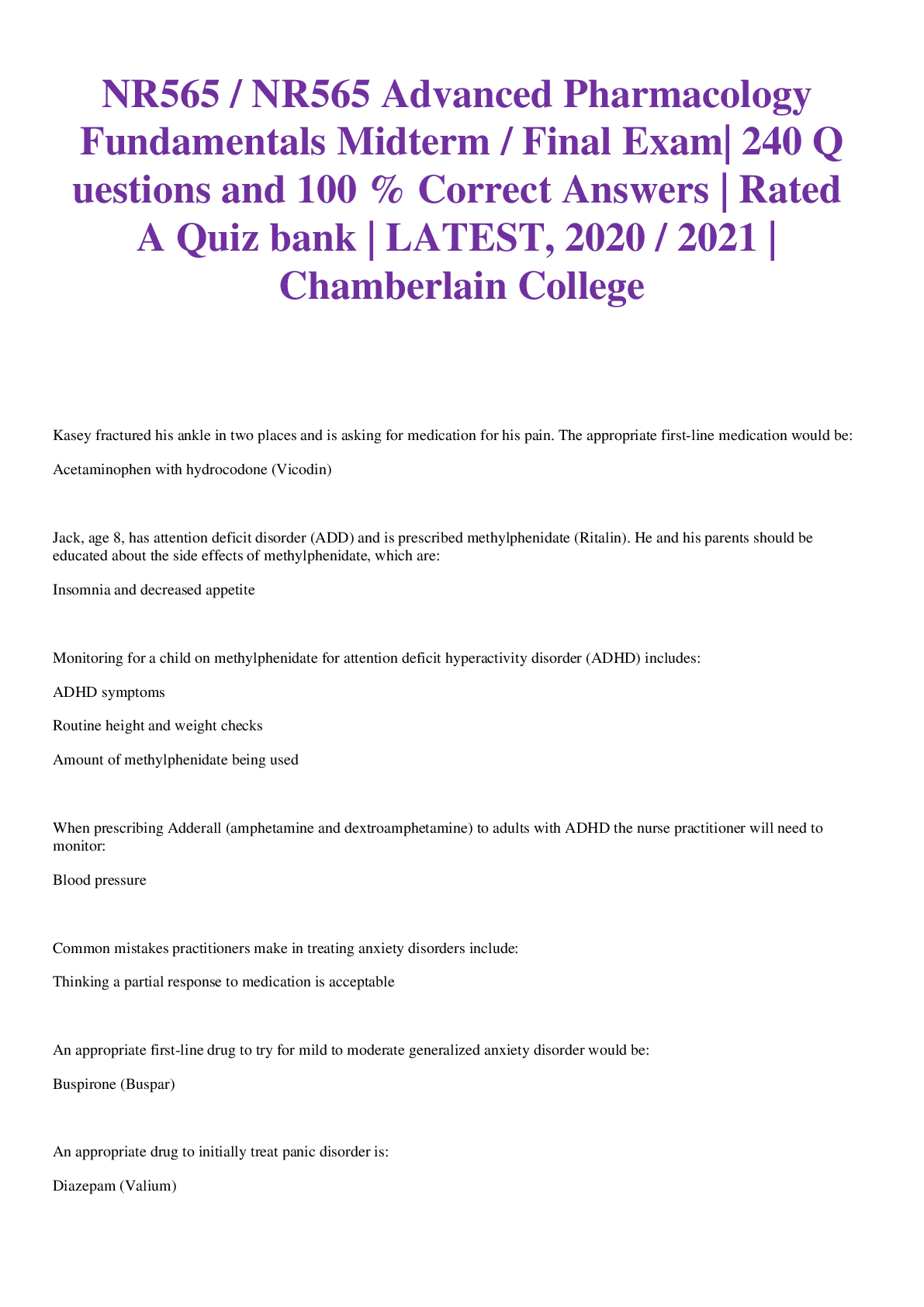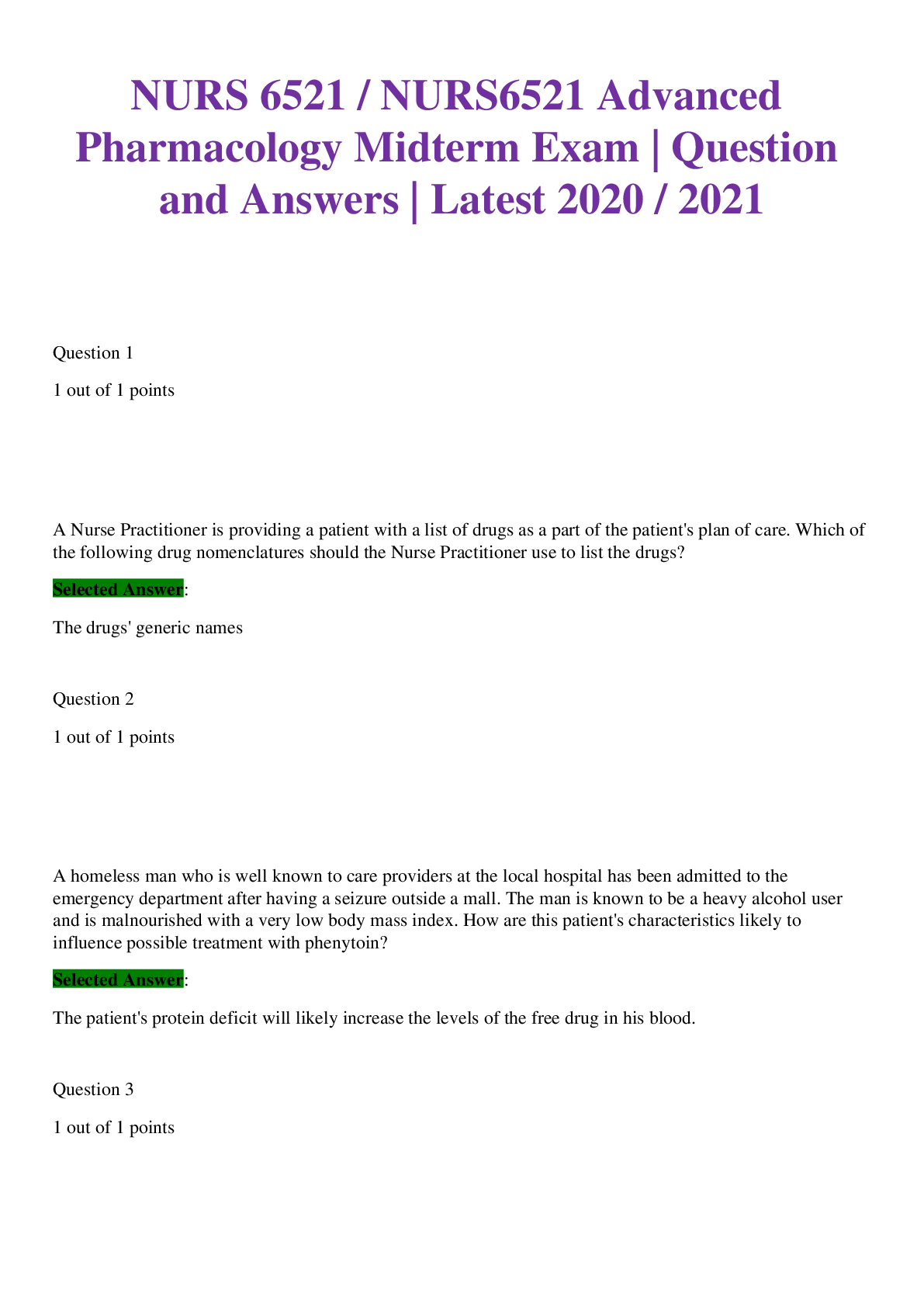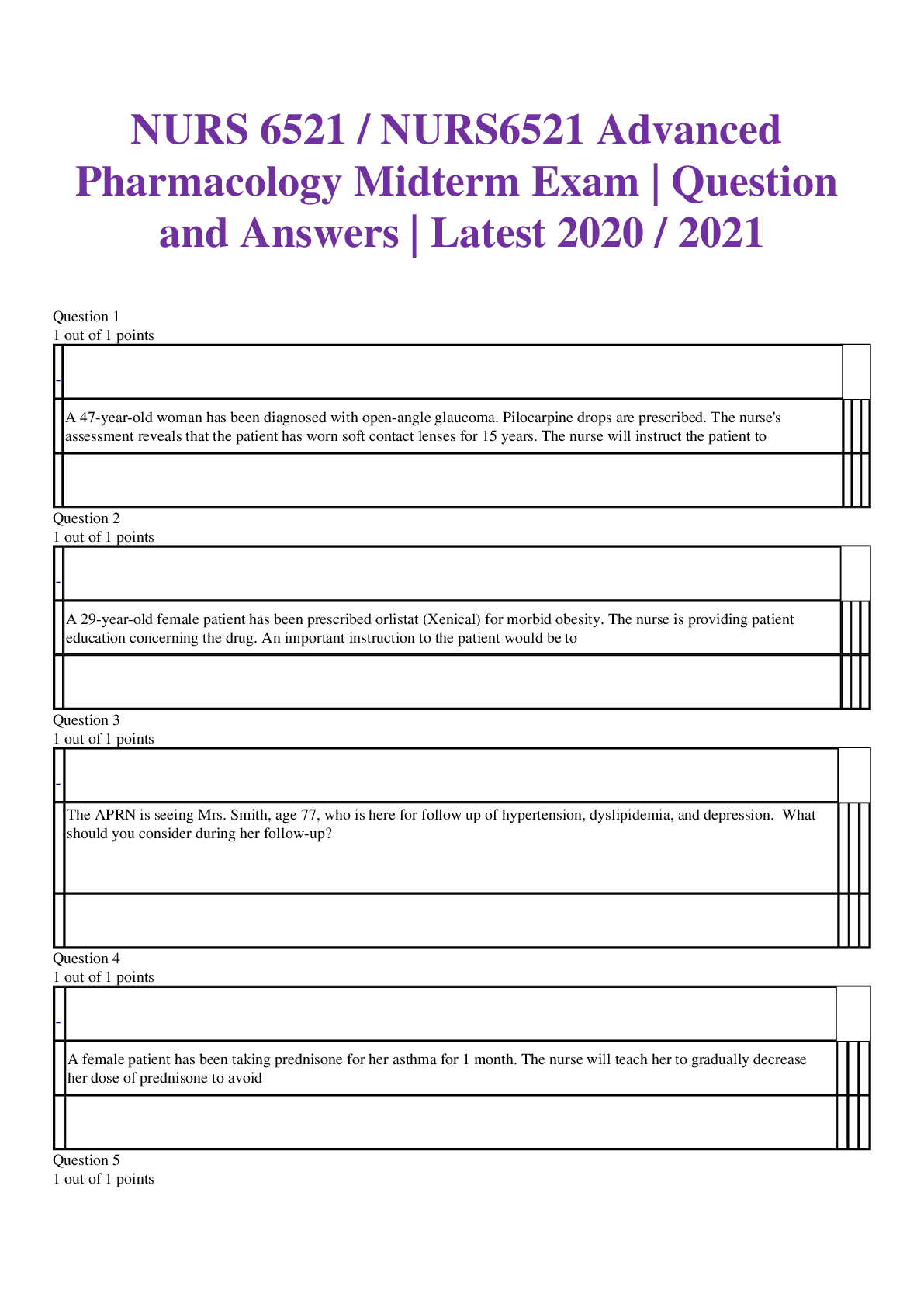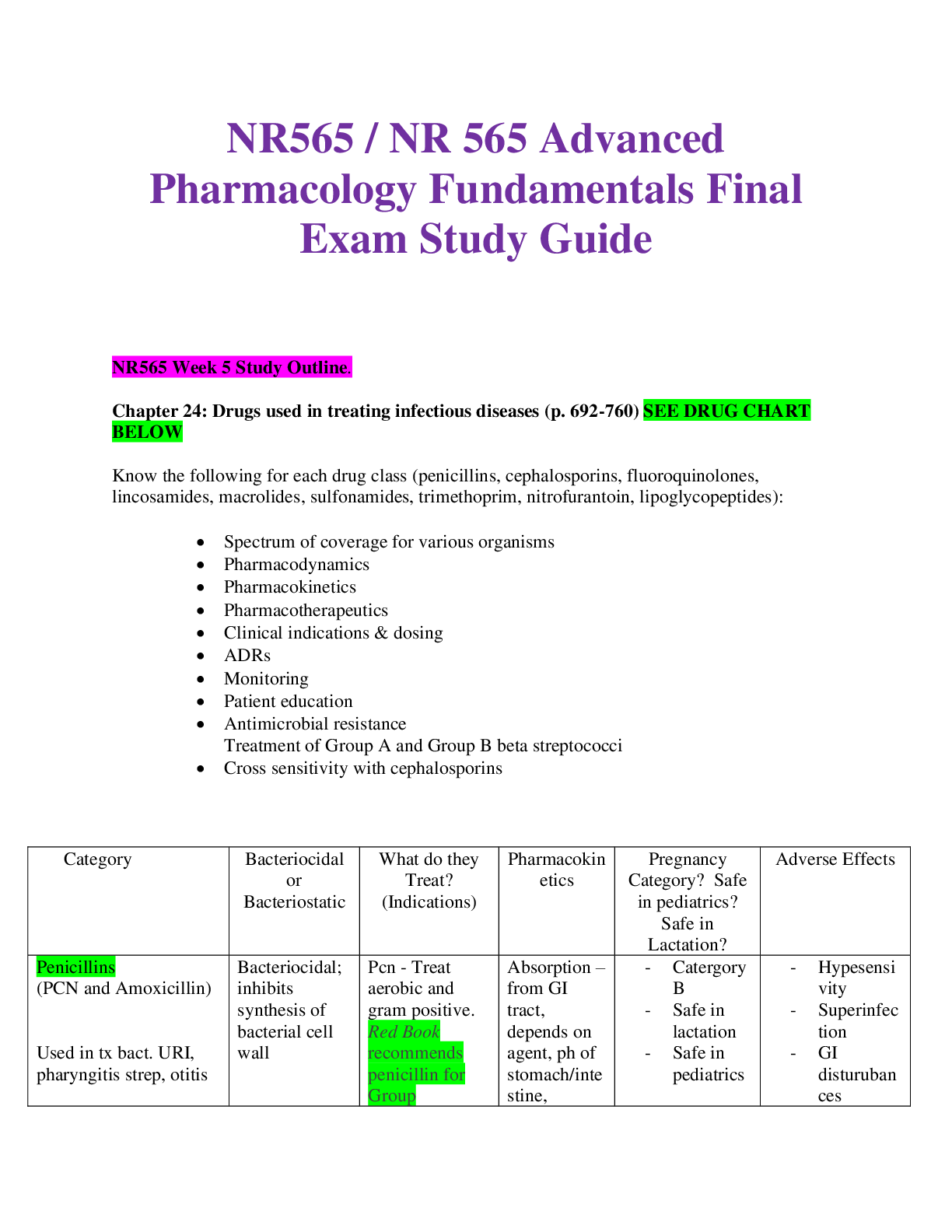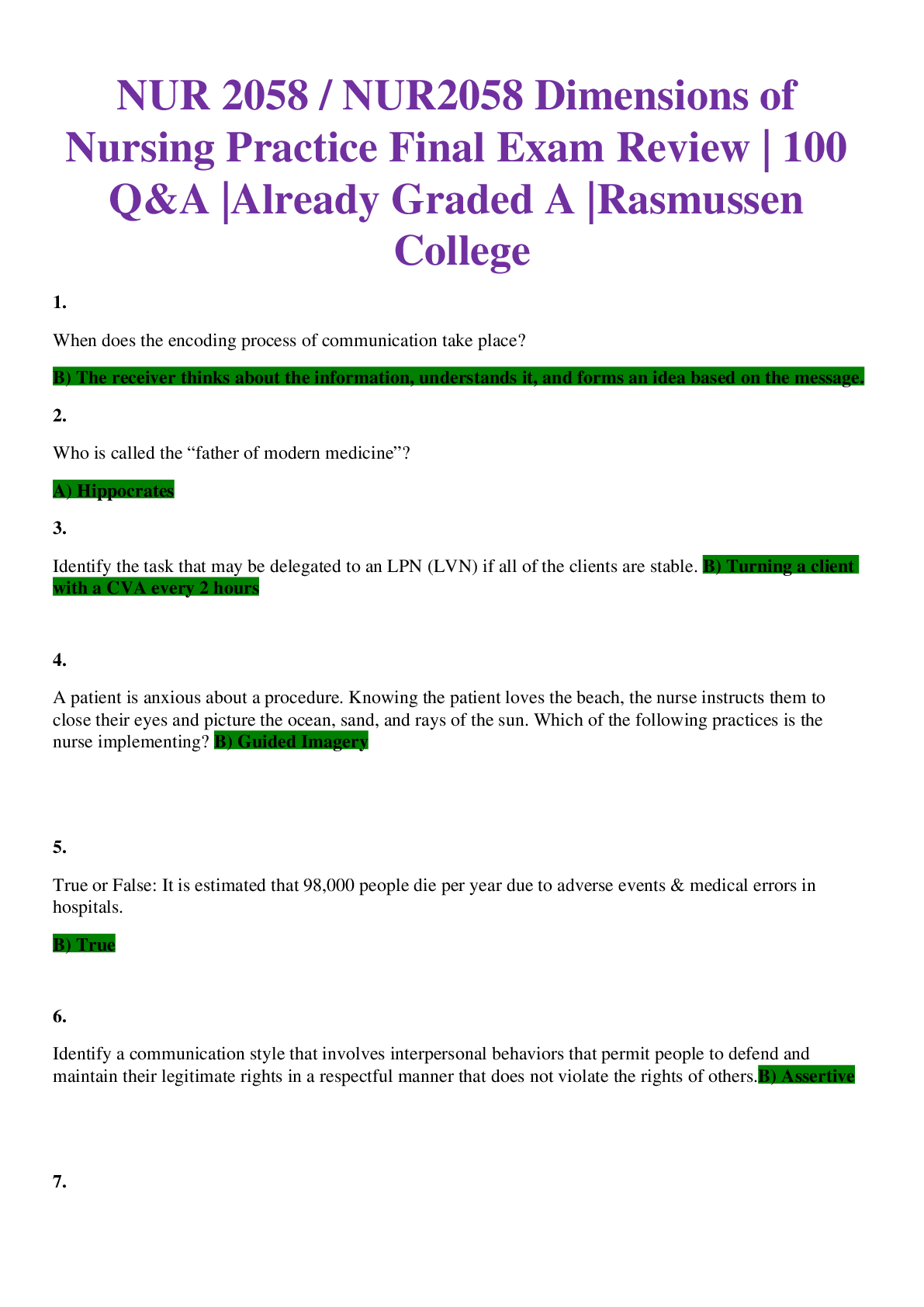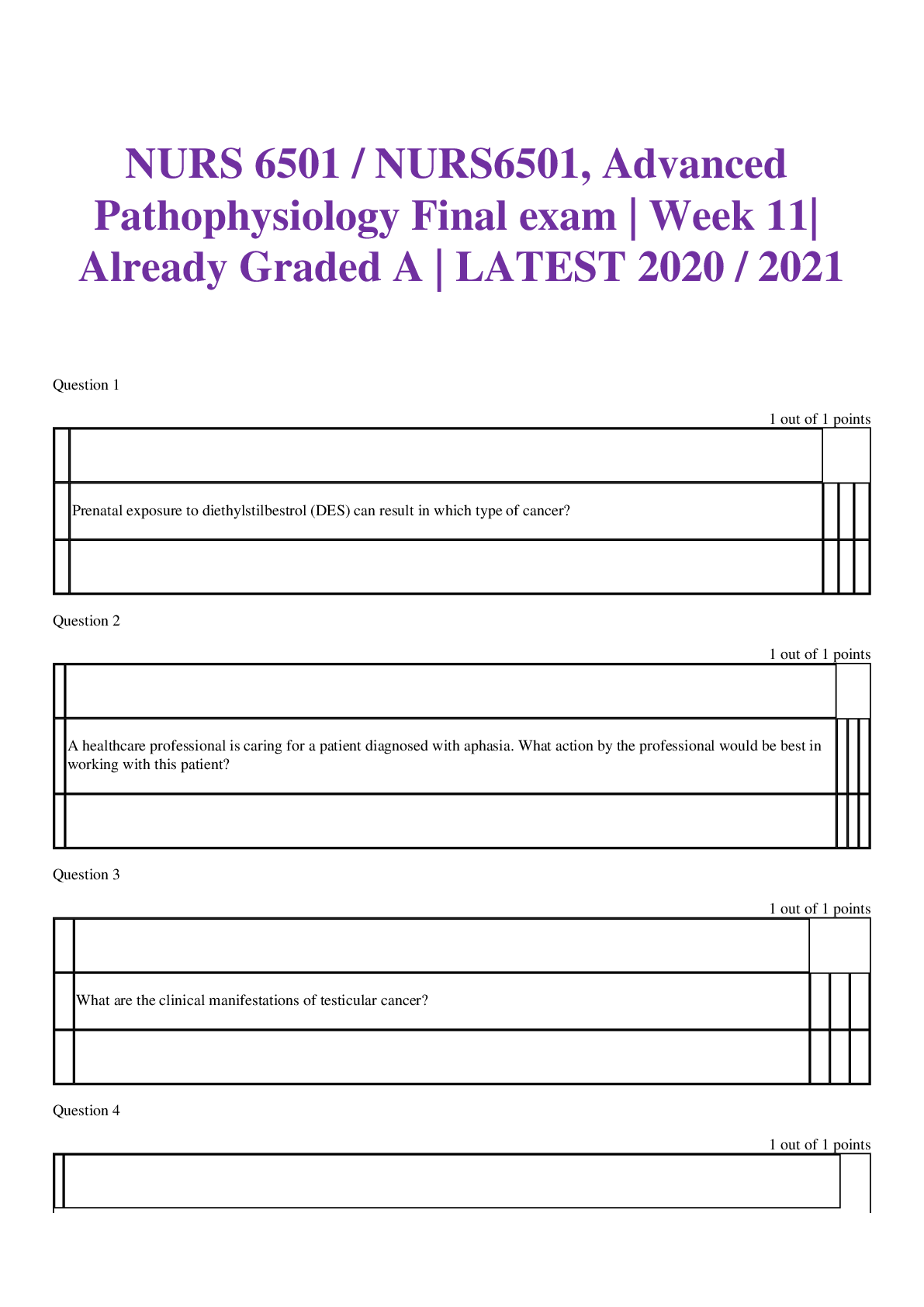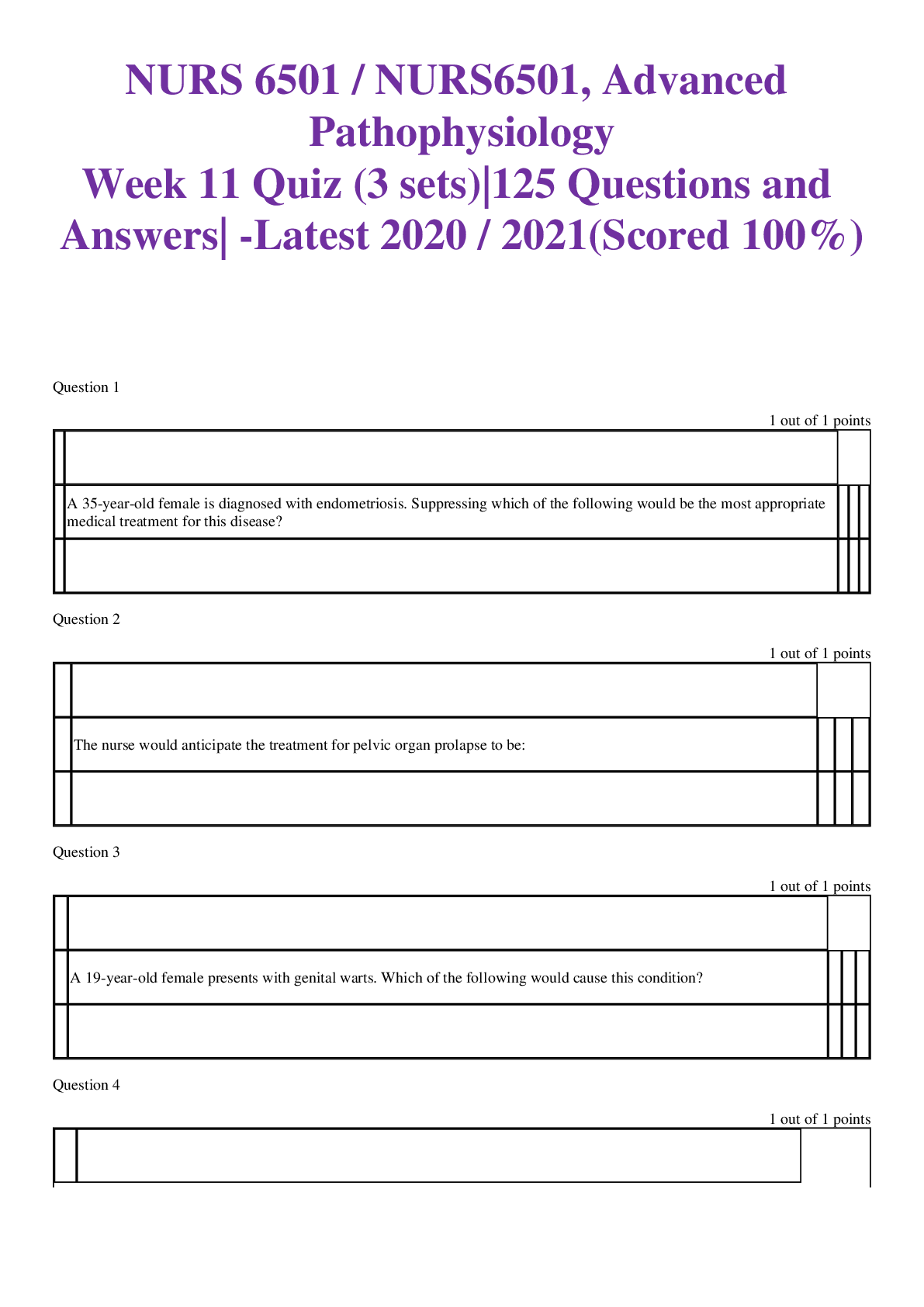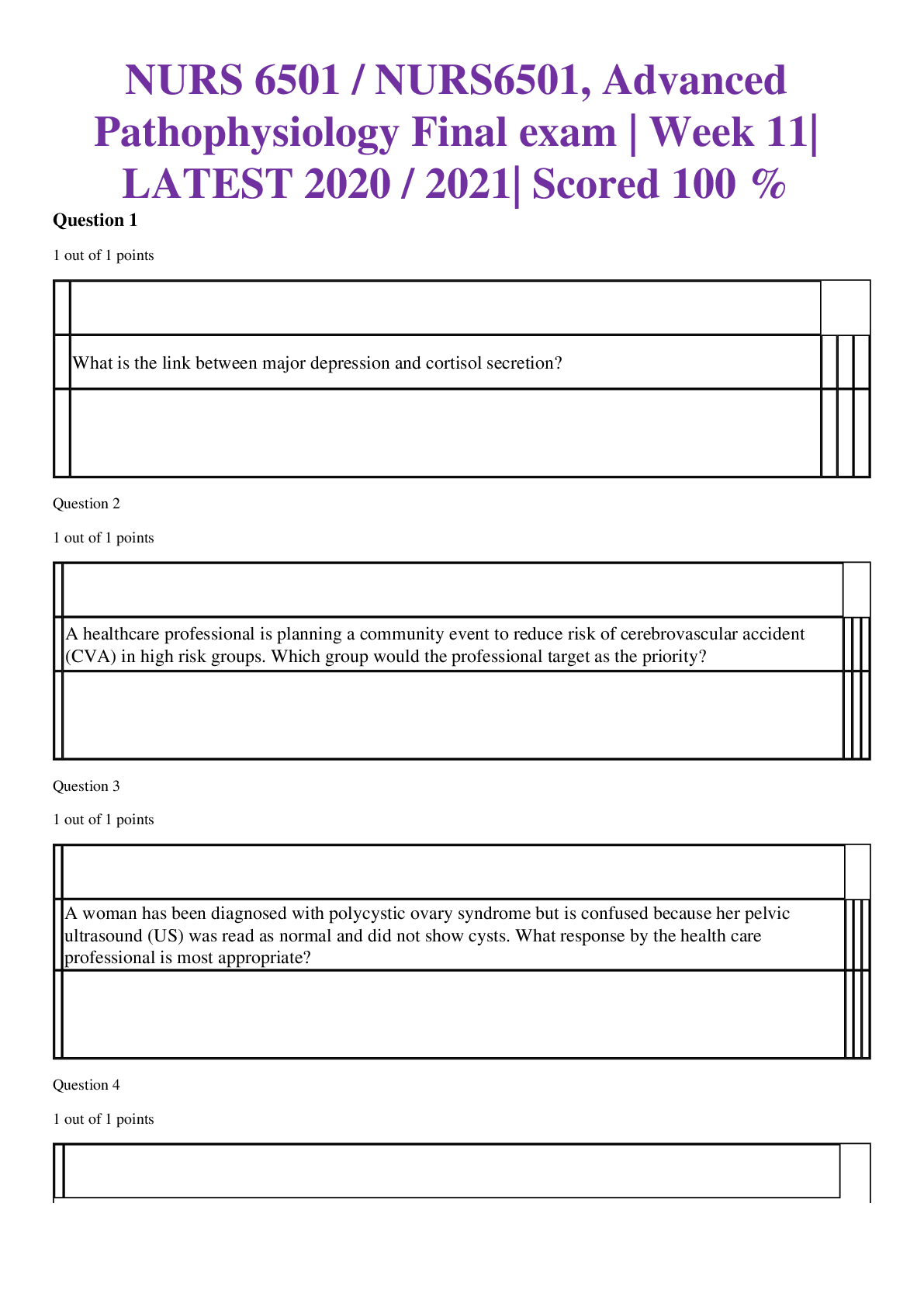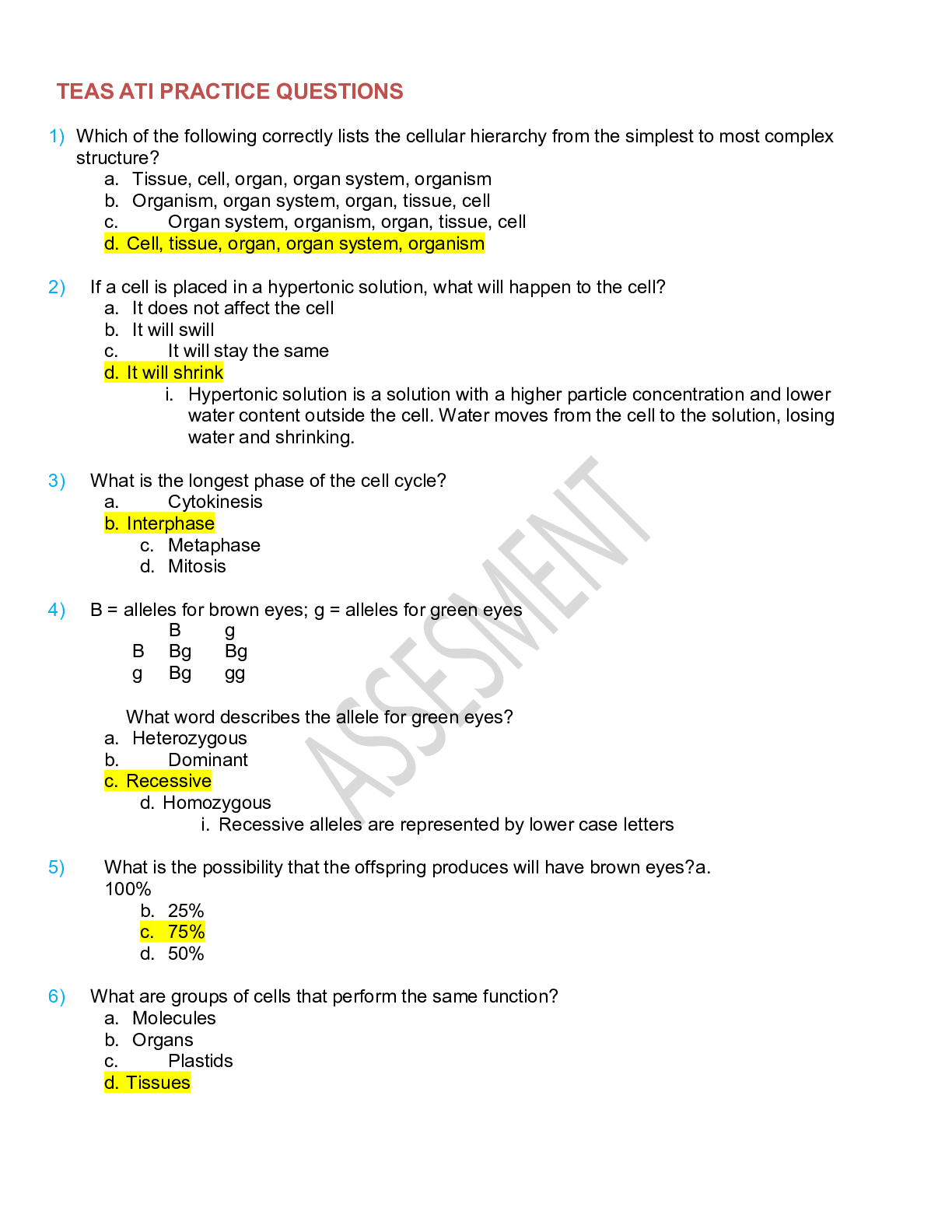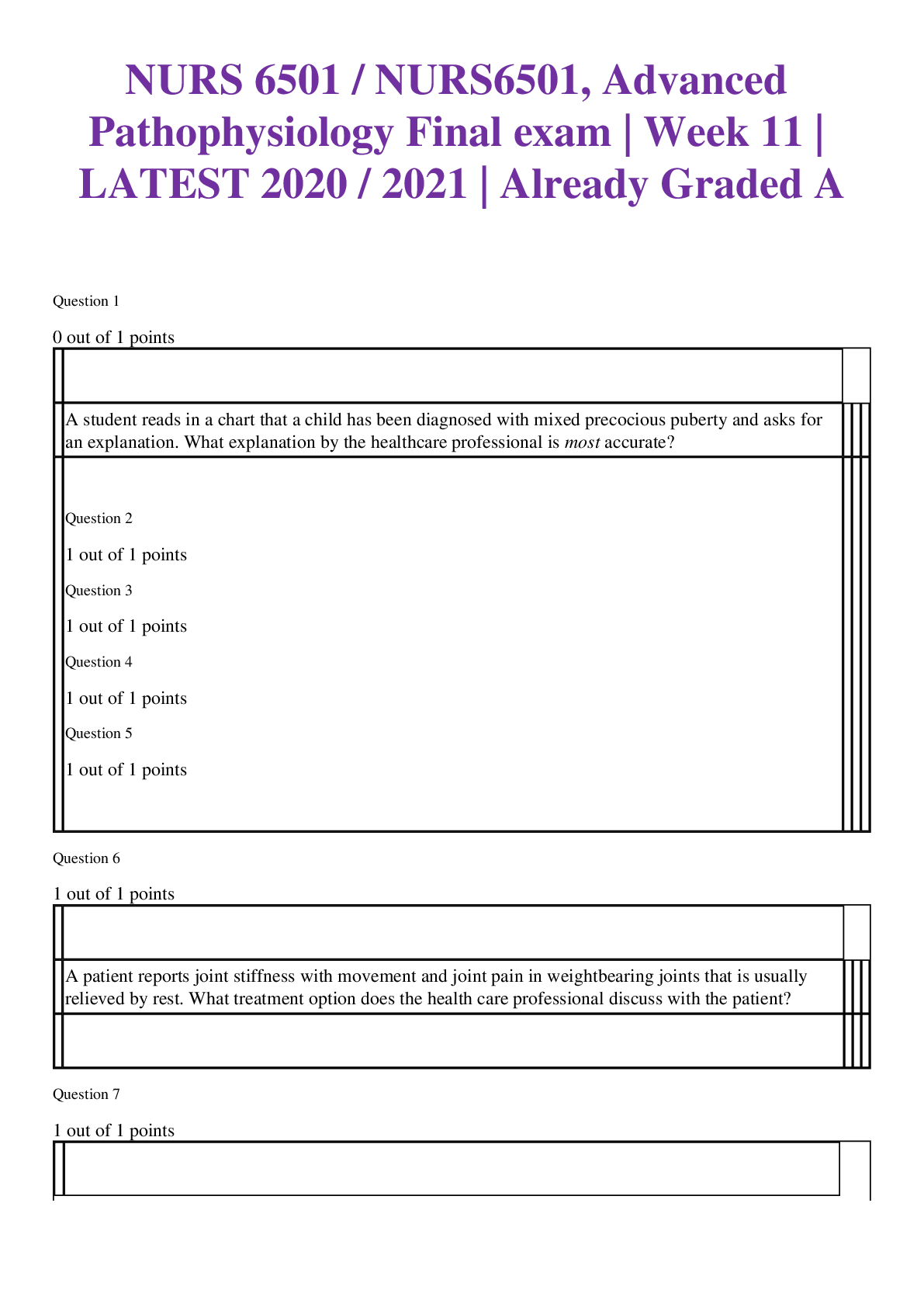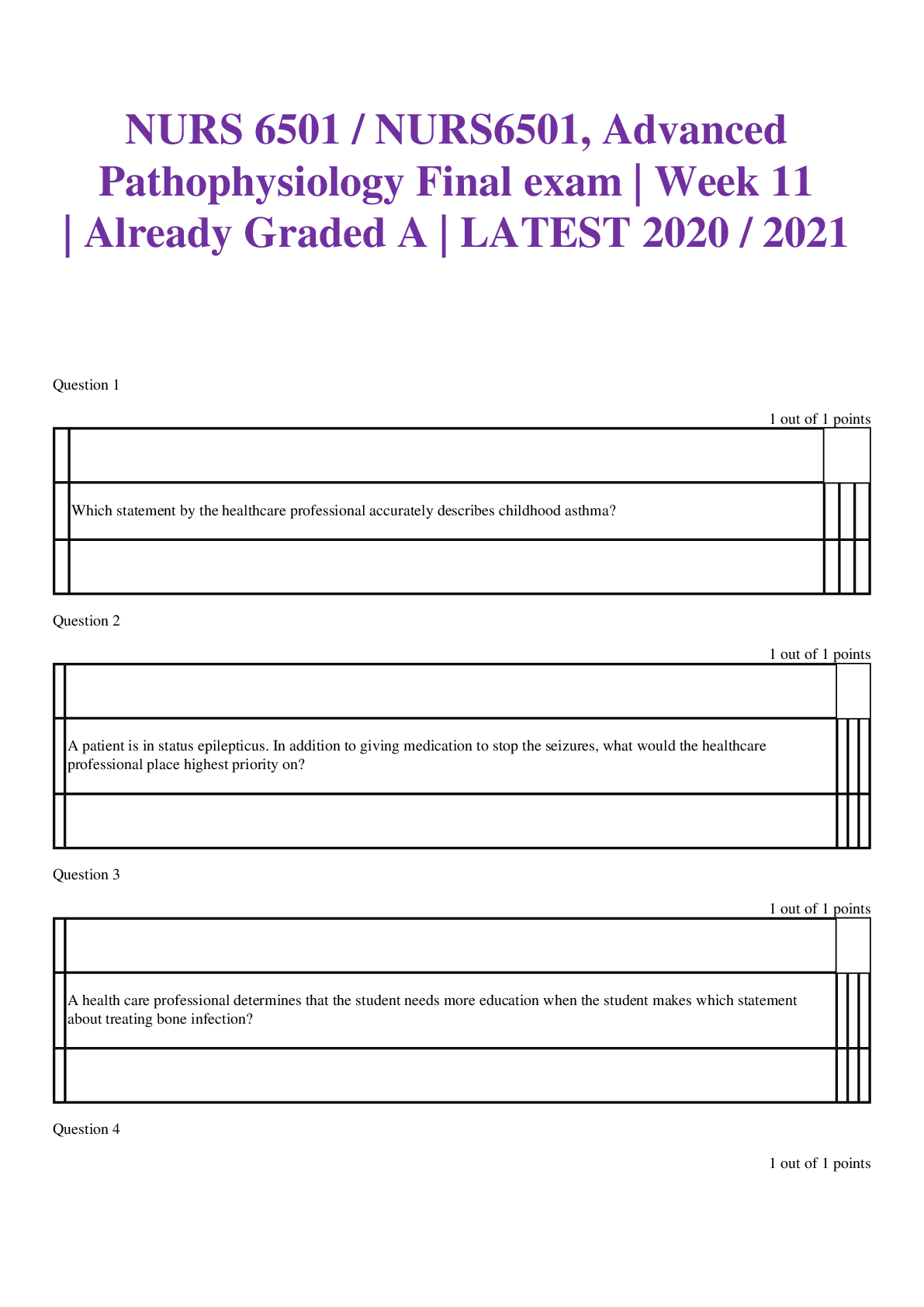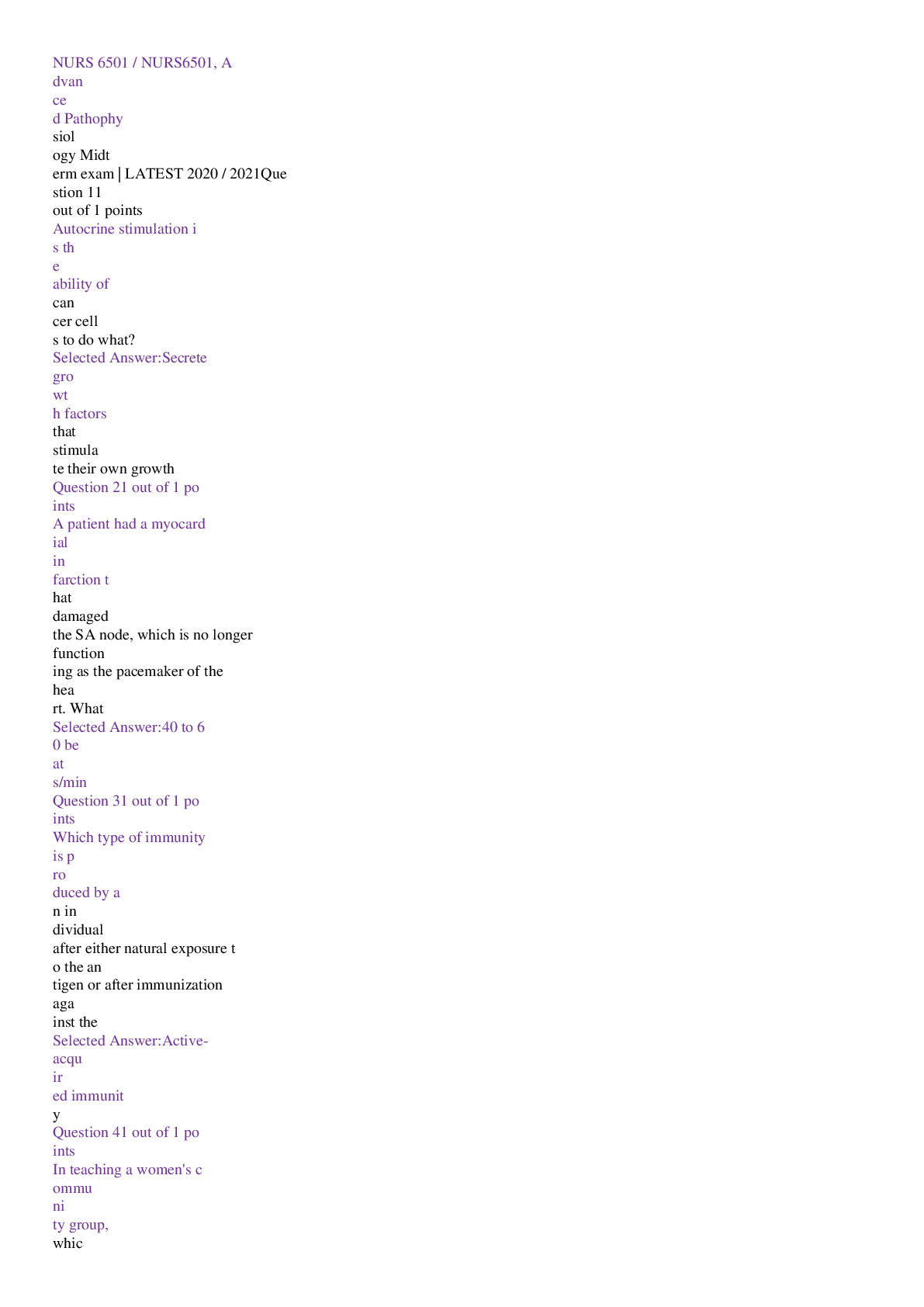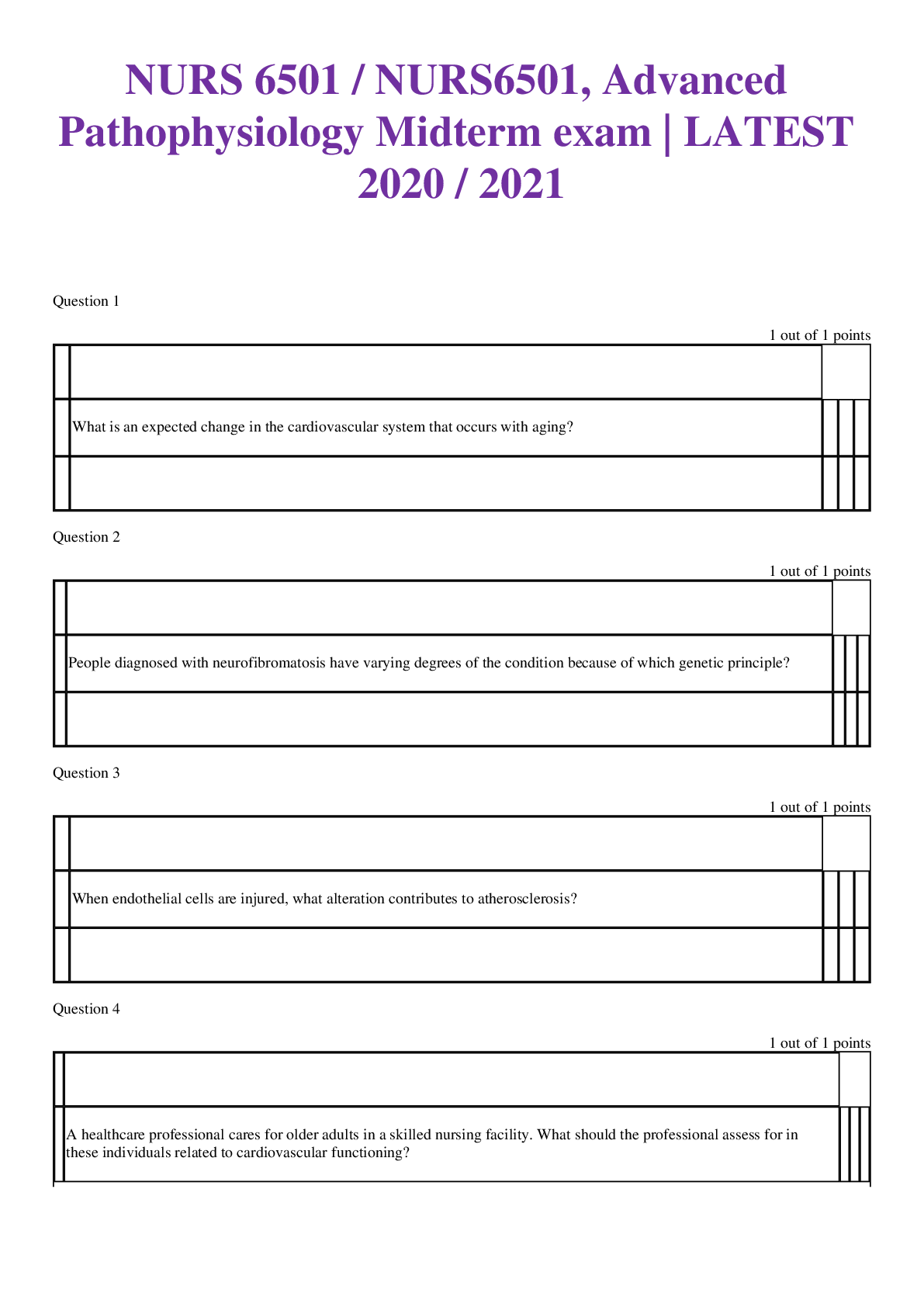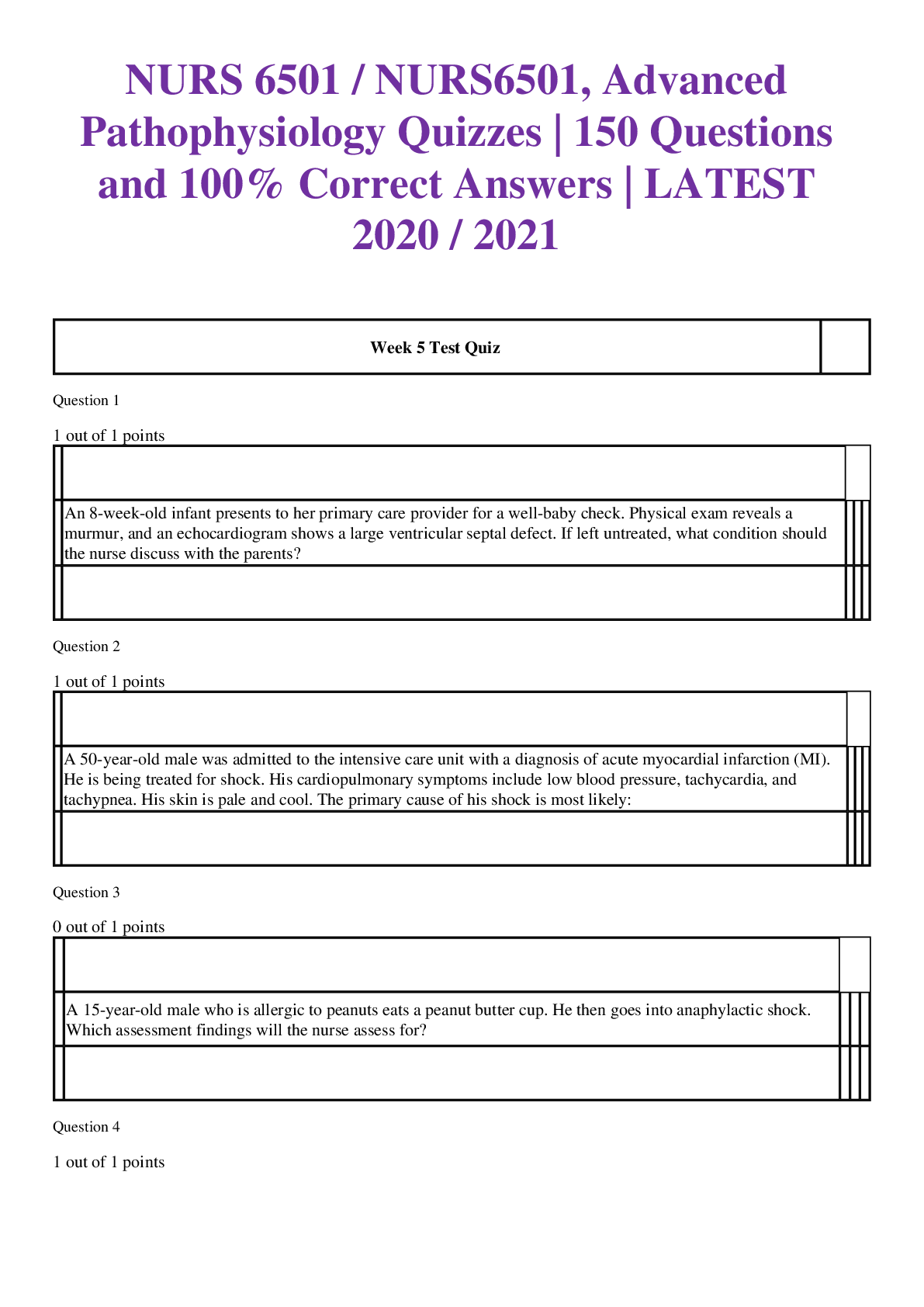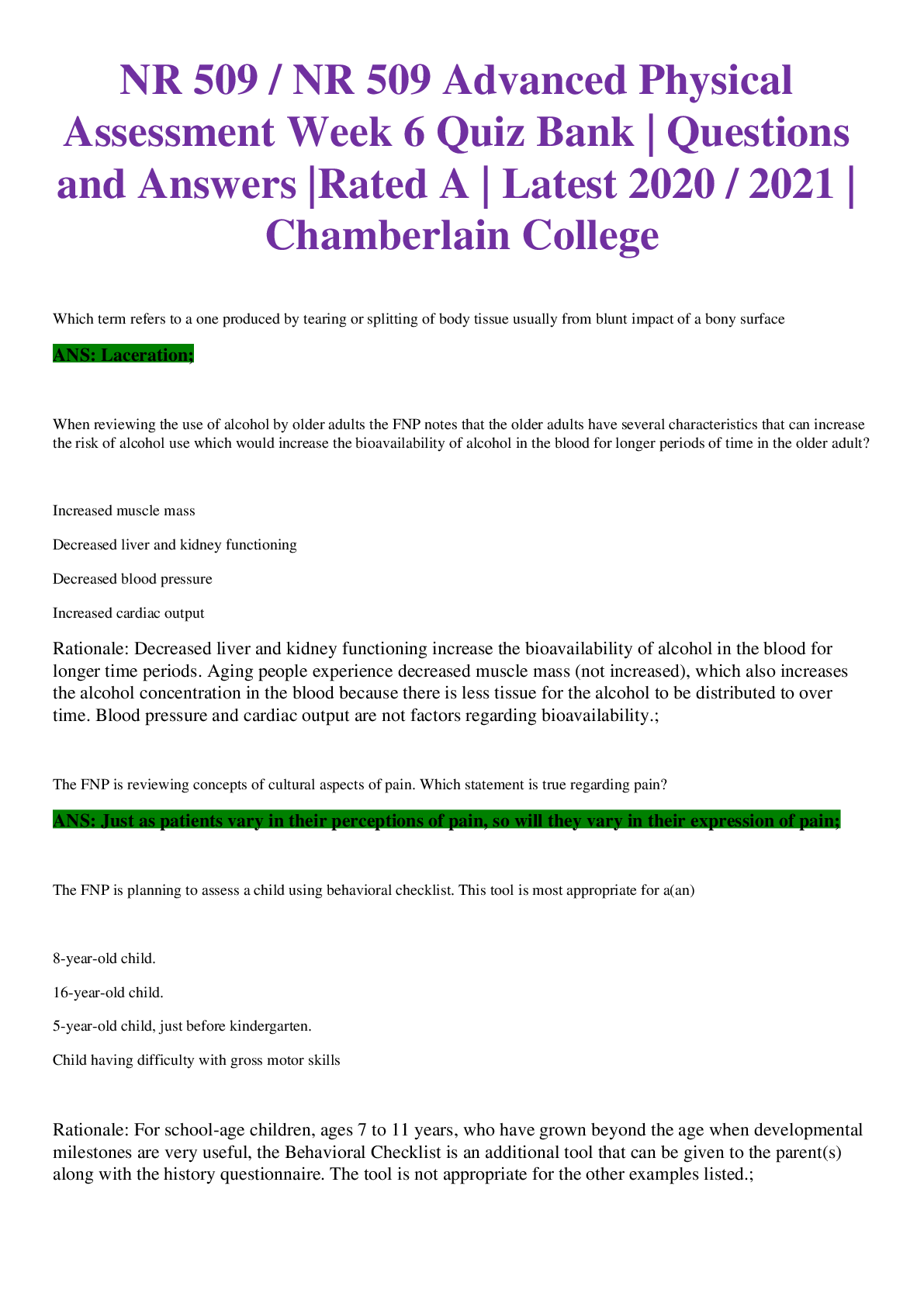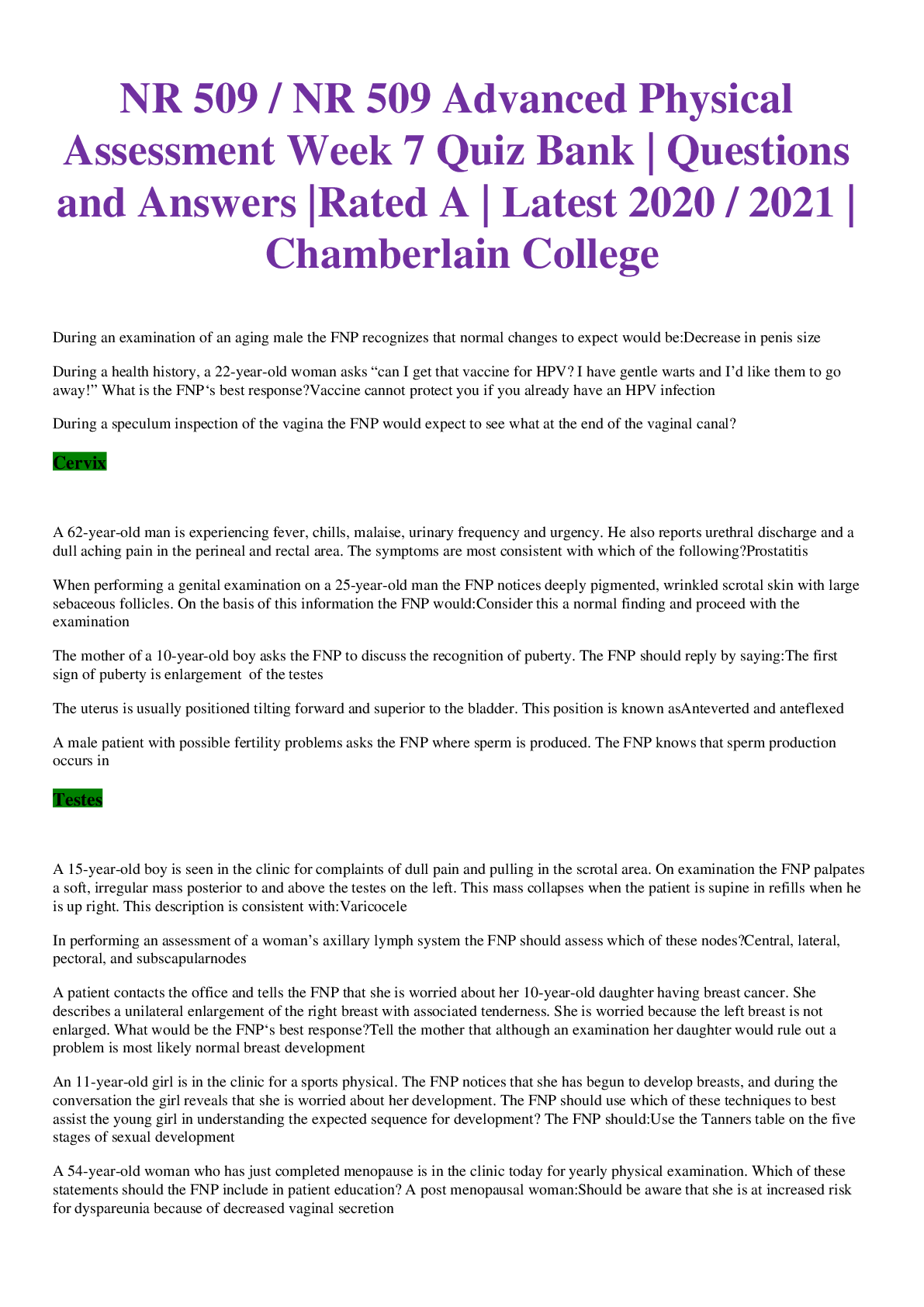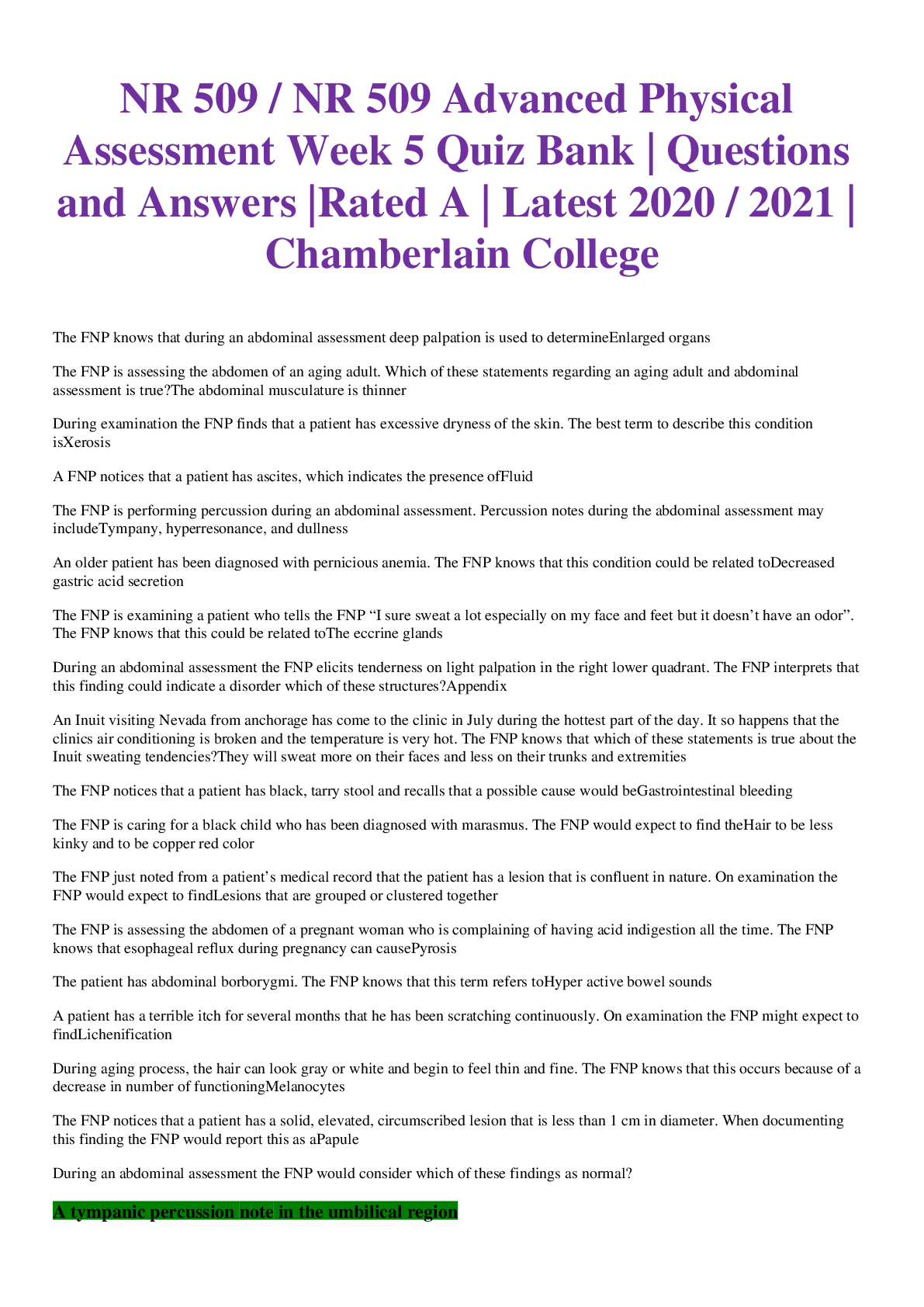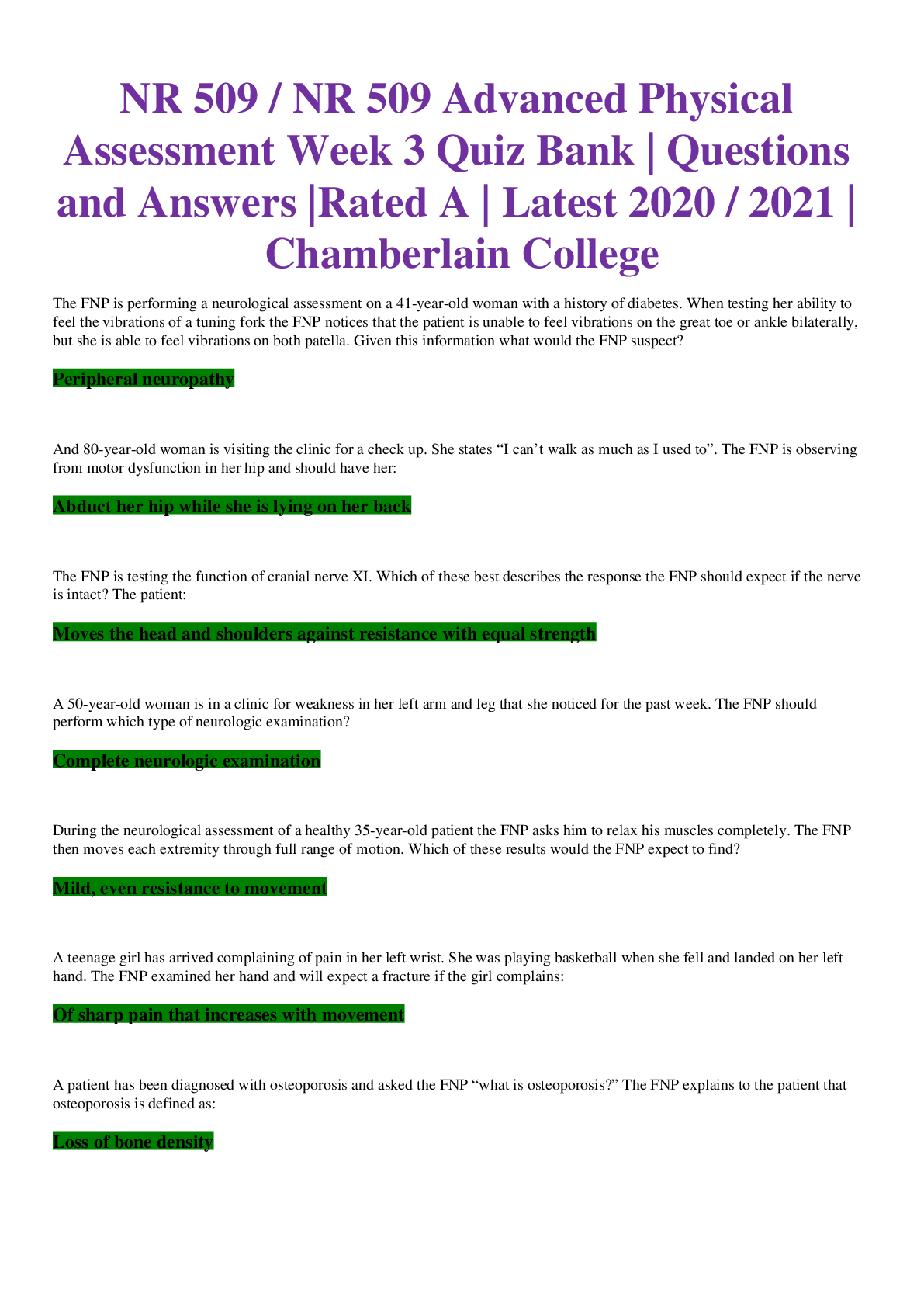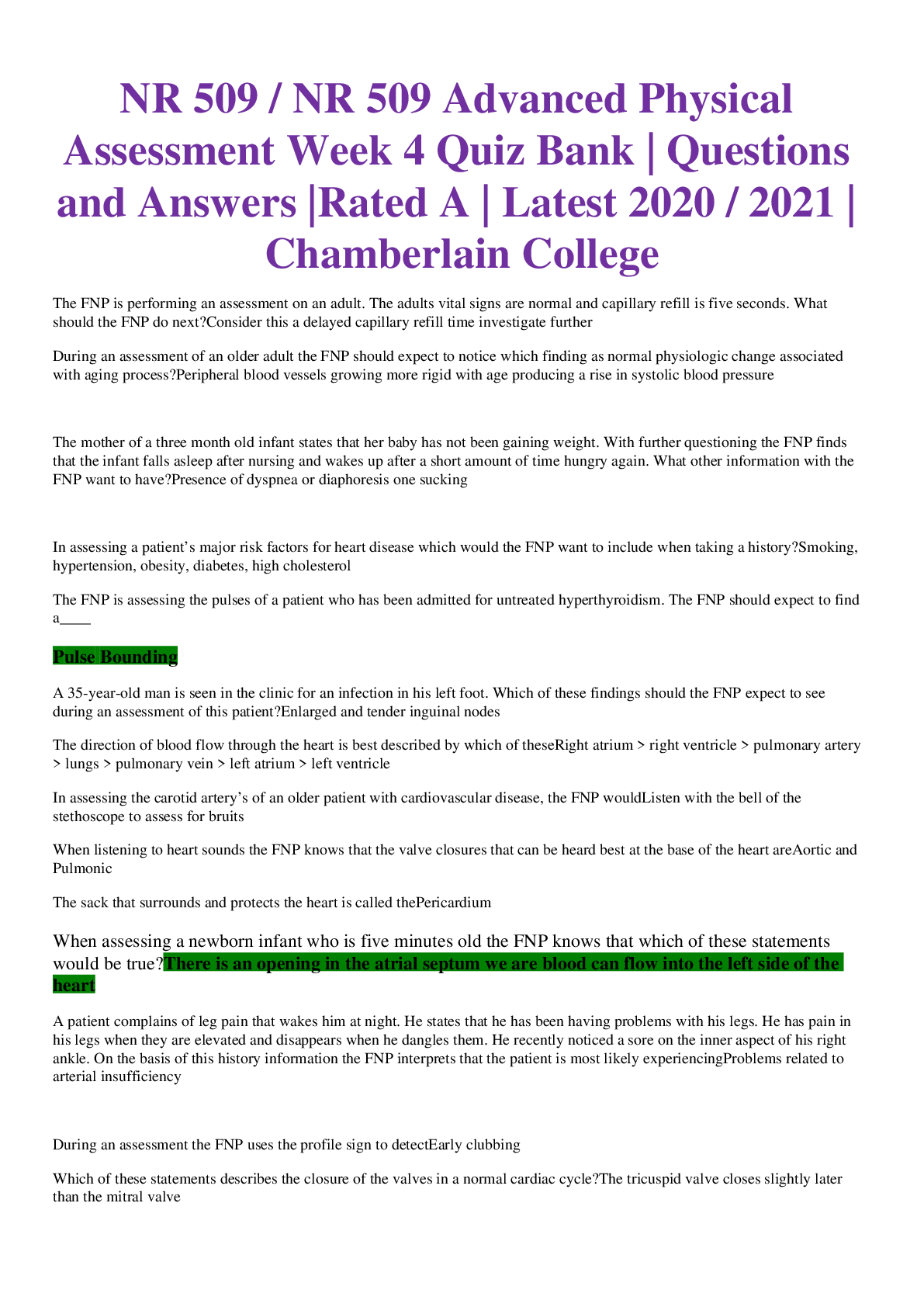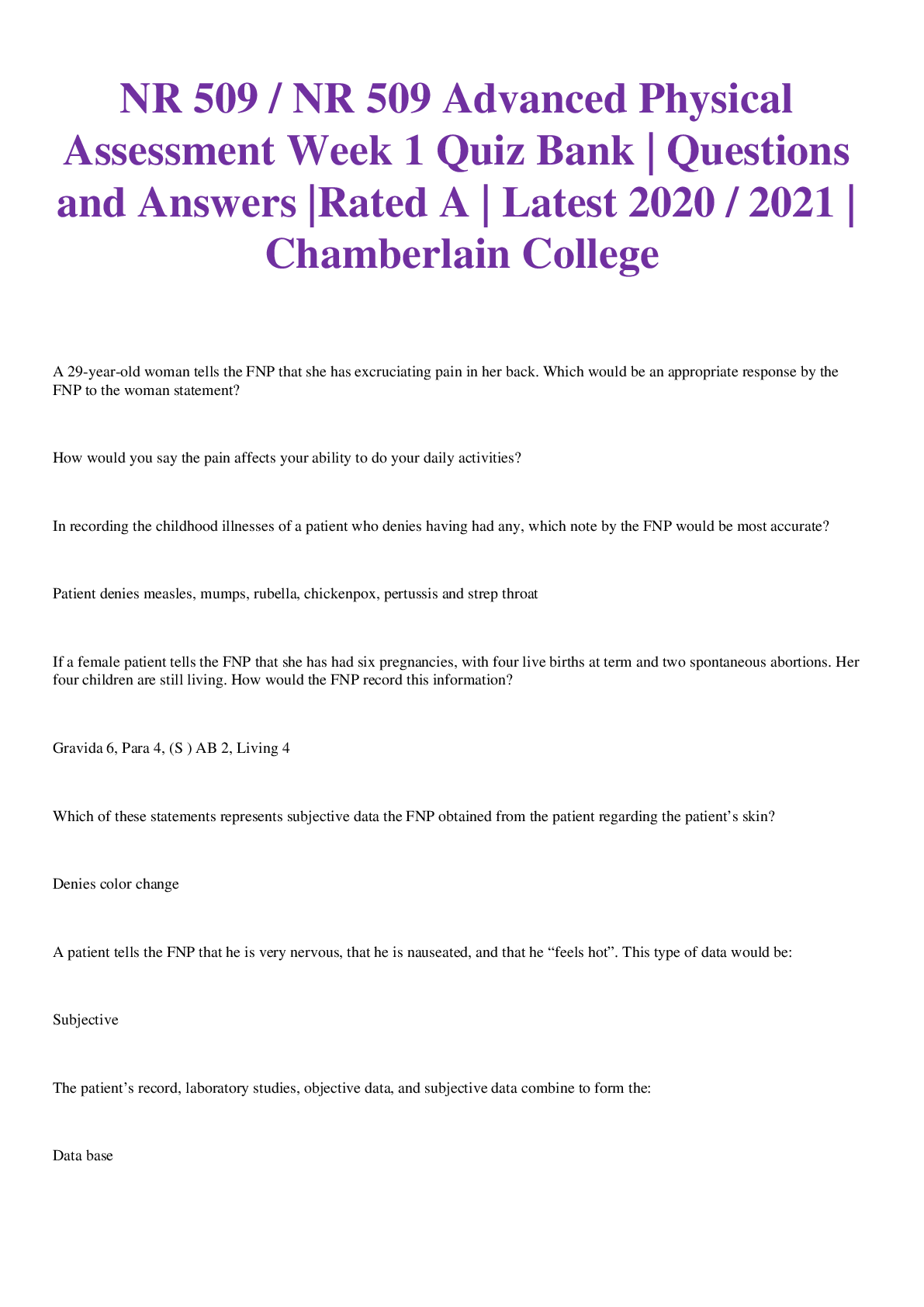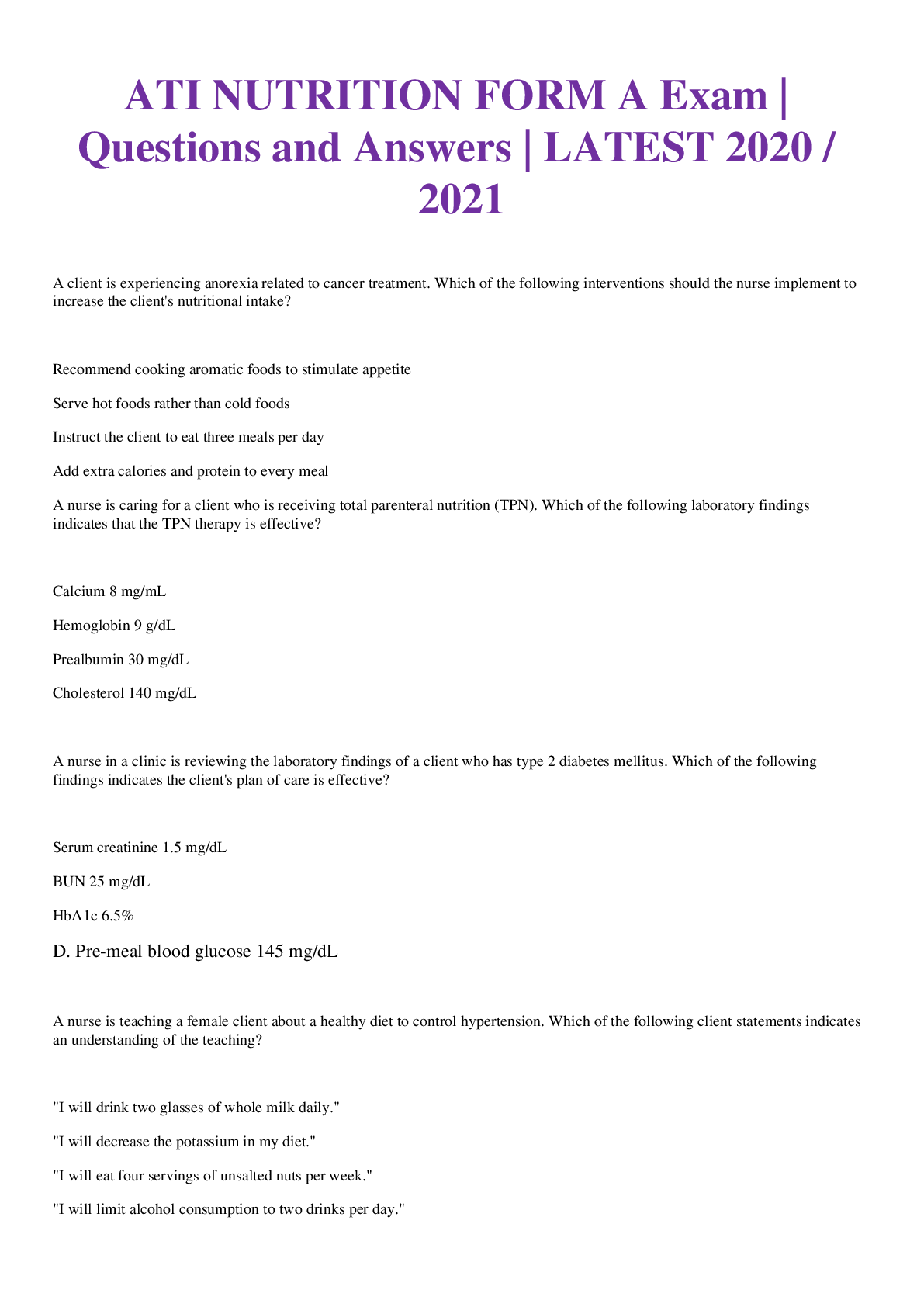*NURSING > EXAM > NRNP 6566 / NRNP6566 Advanced Care of Adults in Acute Settings I Week 3 Knowledge Check | Questions (All)
NRNP 6566 / NRNP6566 Advanced Care of Adults in Acute Settings I Week 3 Knowledge Check | Questions and Verified Answers | Latest 2020 / 2021
Document Content and Description Below
NRNP 6566 / NRNP6566 Advanced Care of Adults in Acute Settings I Week 3 Knowledge Check | Questions and Verified Answers | Latest 2020 / 2021 • Question 1 A 62-year-old male develops acute... atrial tachycardia with a heart rate of 155. BP has been stable at 122/ 86. He is alert and oriented with adequate urine output. What medication would be utilized to treat the heart rate? Correct Answer: Beta blockers, such as Inderal or esmolol, would block conduction of atrial impulses through the AV node. Non-dihydropyridine calcium channel blockers, such as diltiazem or verapamil, would also be appropriate choices. • Question 2 Mrs. Franklin is a 68-year-old woman with long-standing, persistent AF being managed with rhythm control on dofetilide. She also has type 2 diabetes mellitus (T2DM), hypertension, and a myocardial infarction 3 years ago. She also takes an 81 mg aspirin every day. Based on her CHADS2 score and HAS-BLED score, would you recommend starting her on anticoagulation? What data would help you explain why this is important preventative step for the patient? Correct Answer: The decision regarding use of oral anticoagulation should always involve careful consideration of the risks and benefits, and the patient should be involved in that decision. It is suggested to calculate both a patient’s risk of stroke and risk of bleeding and use these data to communicate your reasons for suggesting your recommended therapy. Consider using a HAS-BLED score as a tool to potentially guide the decision to start anticoagulation in patients with atrial fibrillation. Compare the risk for major bleeding (HAS-BLED) to the risk for thromboembolic events (CHADS2 or CHA2DS2-VAS) to determine the benefit of anticoagulation. For example: The patient, having paroxysmal AF with your current risk factors for stroke puts you at a 6.7% risk of stroke per year. At this risk, you would benefit from oral anticoagulation (warfarin, dabigatran, rivaroxaban), which would reduce your risk of stroke by approximately 66% or decrease your risk from 6.7% to approximately 2.2% per year. Your risk of major bleeding (intracranial hemorrhage, hospitalization for bleeding, drop in hemoglobin by 2 g/dL, or requiring a blood transfusion) while on oral anticoagulation is 5.8%, which is lower than your risk of stroke without treatment. We generally recommend oral anticoagulation when an individual’s risk of stroke exceeds the risk of bleeding. • Question 3 [Show More]
Last updated: 1 month ago
Preview 1 out of 10 pages
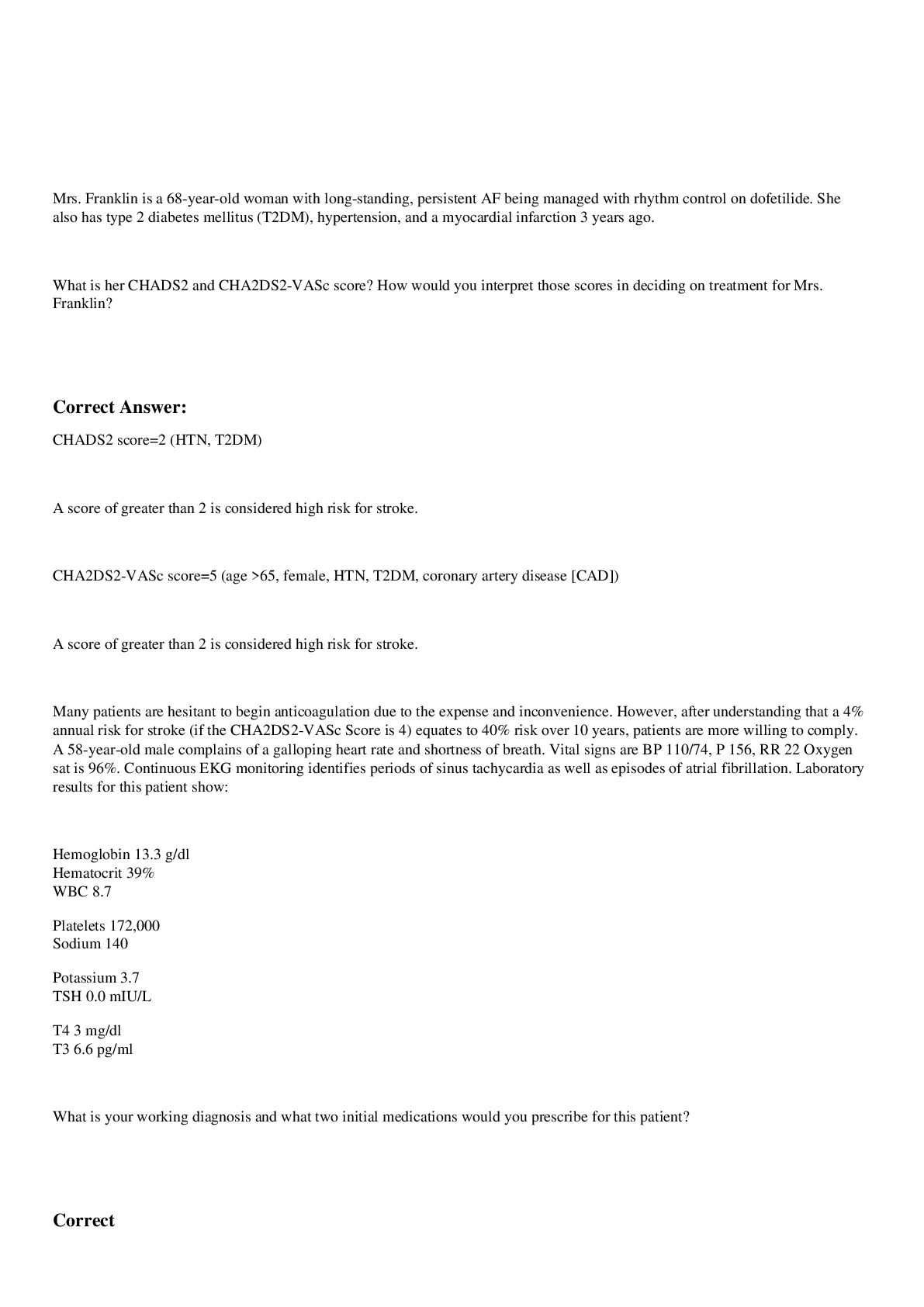
Reviews( 0 )
Document information
Connected school, study & course
About the document
Uploaded On
Dec 22, 2020
Number of pages
10
Written in
Additional information
This document has been written for:
Uploaded
Dec 22, 2020
Downloads
0
Views
66

